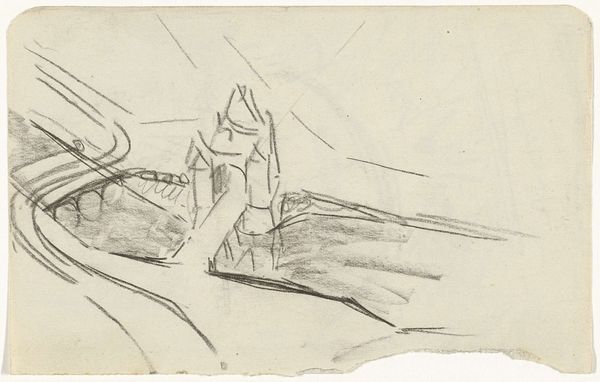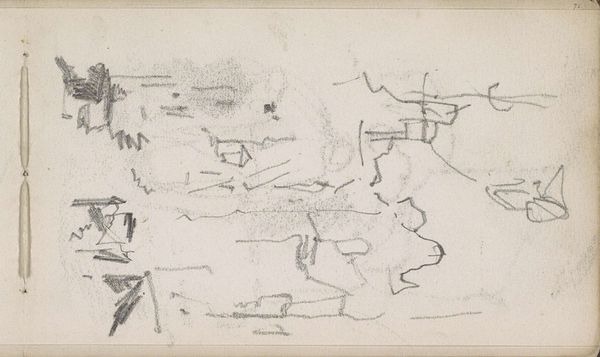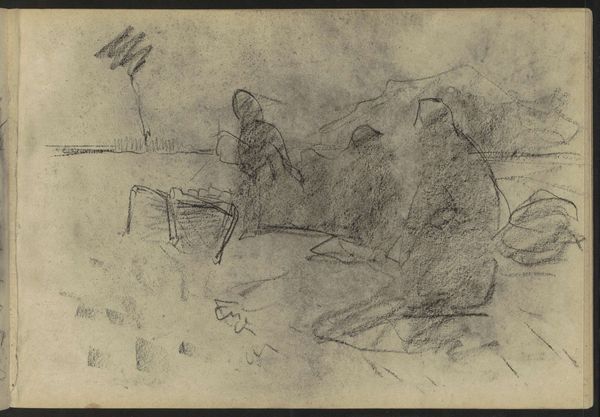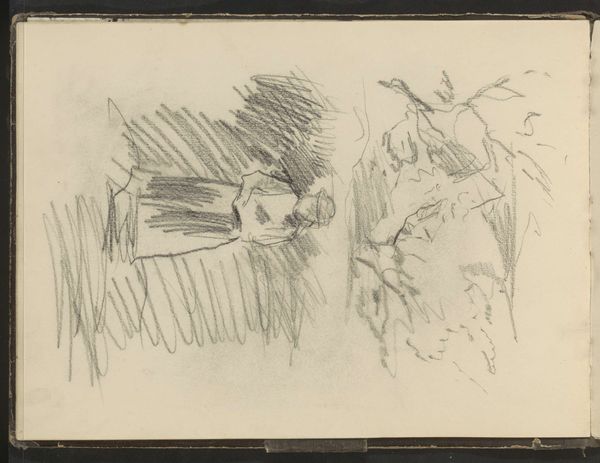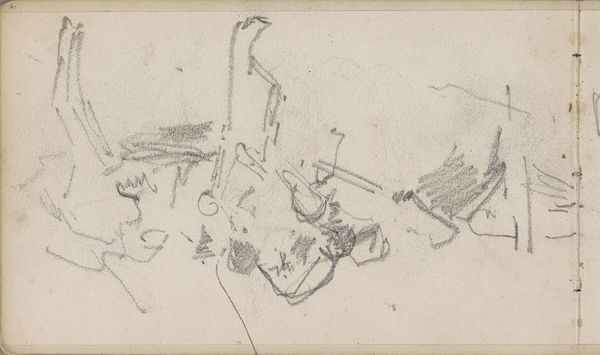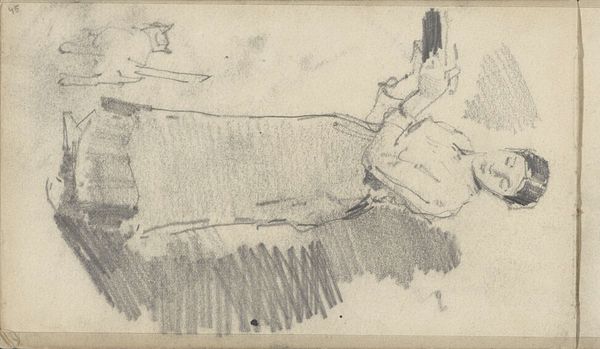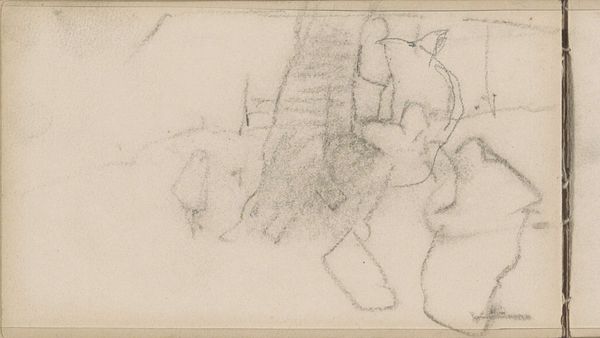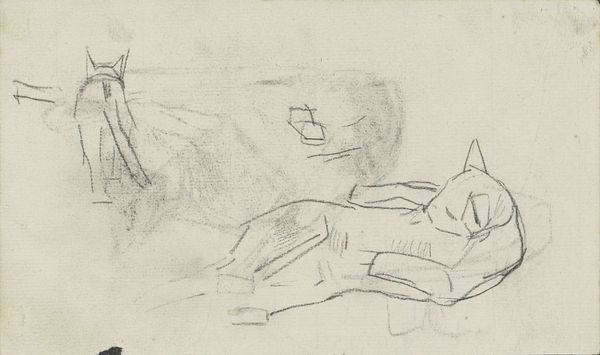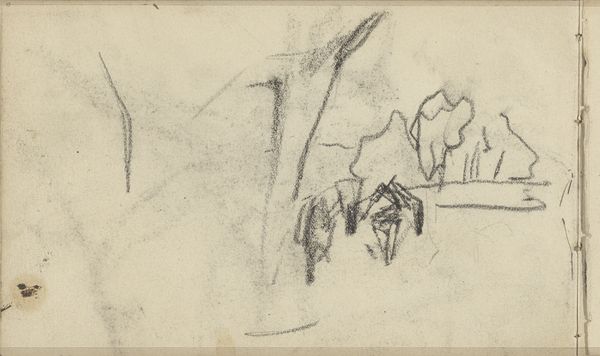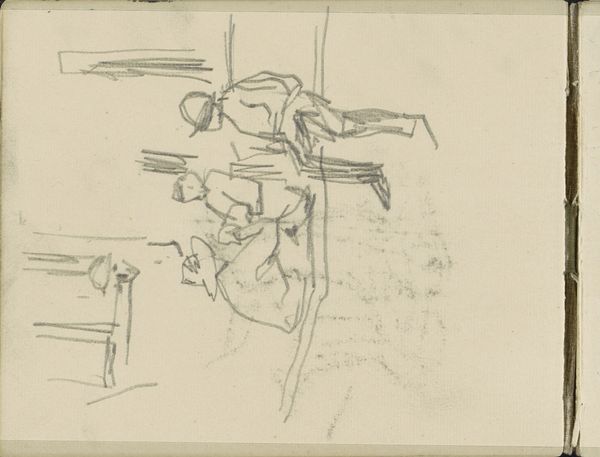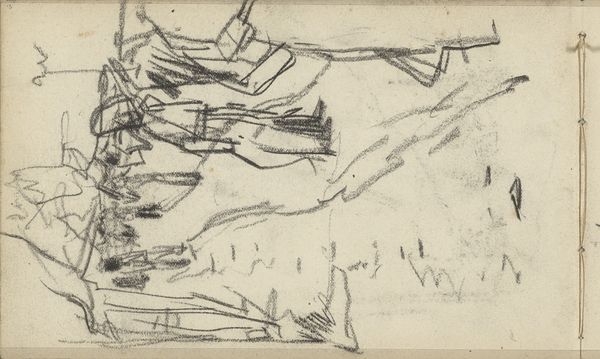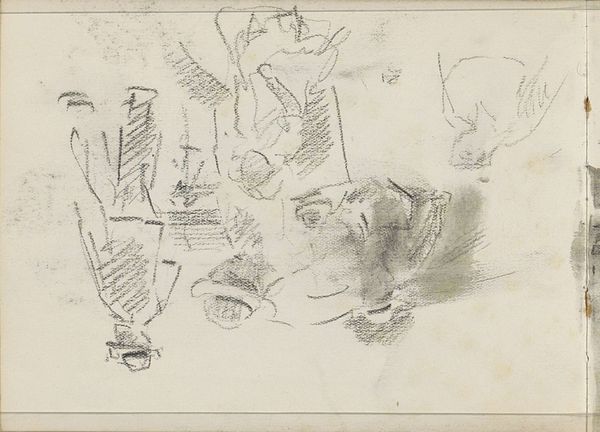
drawing, pencil
#
portrait
#
drawing
#
impressionism
#
figuration
#
sketch
#
pencil
Copyright: Rijks Museum: Open Domain
Editor: This is "Studieblad," a pencil drawing made between 1881 and 1883 by George Hendrik Breitner. It's currently at the Rijksmuseum. It strikes me as very loose, like the artist was trying to capture movement and gestures more than details. What do you see in this piece? Curator: The hurried nature of the drawing style, typical of the Impressionist aesthetic, echoes a broader societal shift toward valuing immediacy and fleeting moments. These sketches are vessels, brimming with stories of how the artist perceives their rapidly changing surroundings. Look at the recurring motif of figures caught mid-action. What does that tell you about Breitner's artistic project? Editor: Perhaps he wanted to record real life, as he saw it happening around him. But what about these almost abstract shapes? Do they carry symbolic weight? Curator: Indeed. Think of these abstract forms not as simple shapes, but as ideograms – visual symbols laden with cultural memory. Even the emptiness around them serves to accentuate the fragmented nature of human perception. Do you find that the lack of detail heightens your emotional response, triggering perhaps a personal connection with loss or incompletion? Editor: I can see that. It almost feels dreamlike, how the figures emerge from the background. I hadn’t considered the psychological effect of the incompleteness before. Curator: Exactly. Breitner isn’t just recording a scene, but capturing a mood, imbuing the quotidian with layers of symbolic depth, thus preserving and transmitting the spirit of an era. Editor: So much is implied with so little! I’ll definitely look at sketches differently now. Curator: And understanding those visual symbols opens up a richer dialogue with both the artwork and the cultural memory it embodies.
Comments
No comments
Be the first to comment and join the conversation on the ultimate creative platform.
